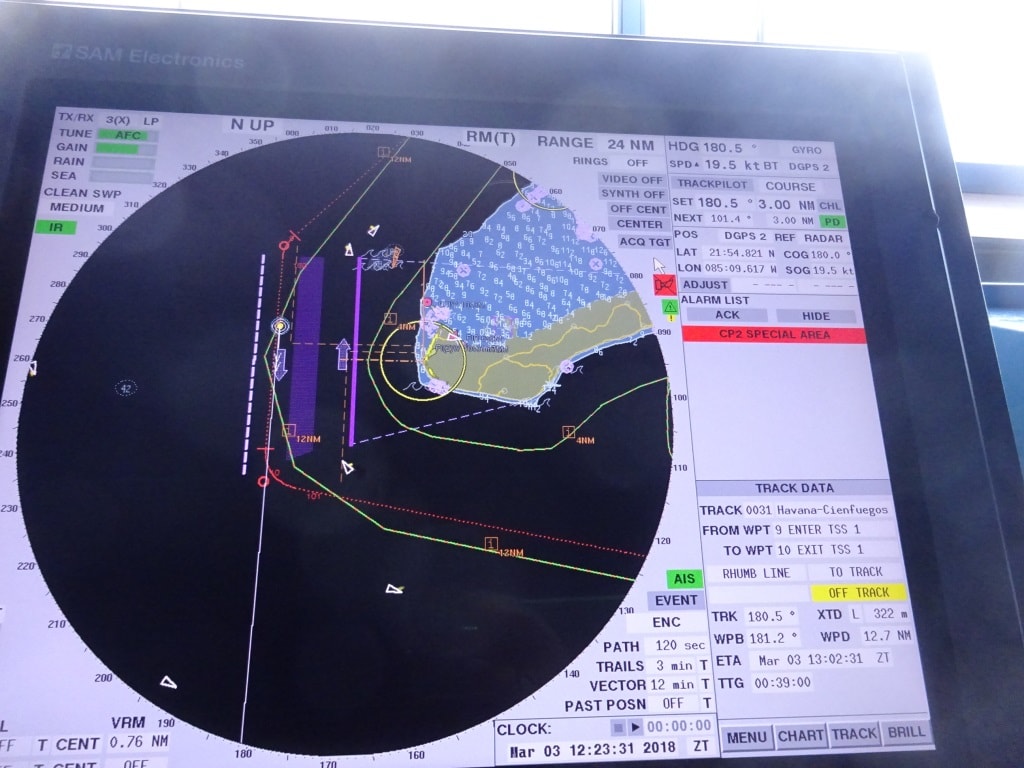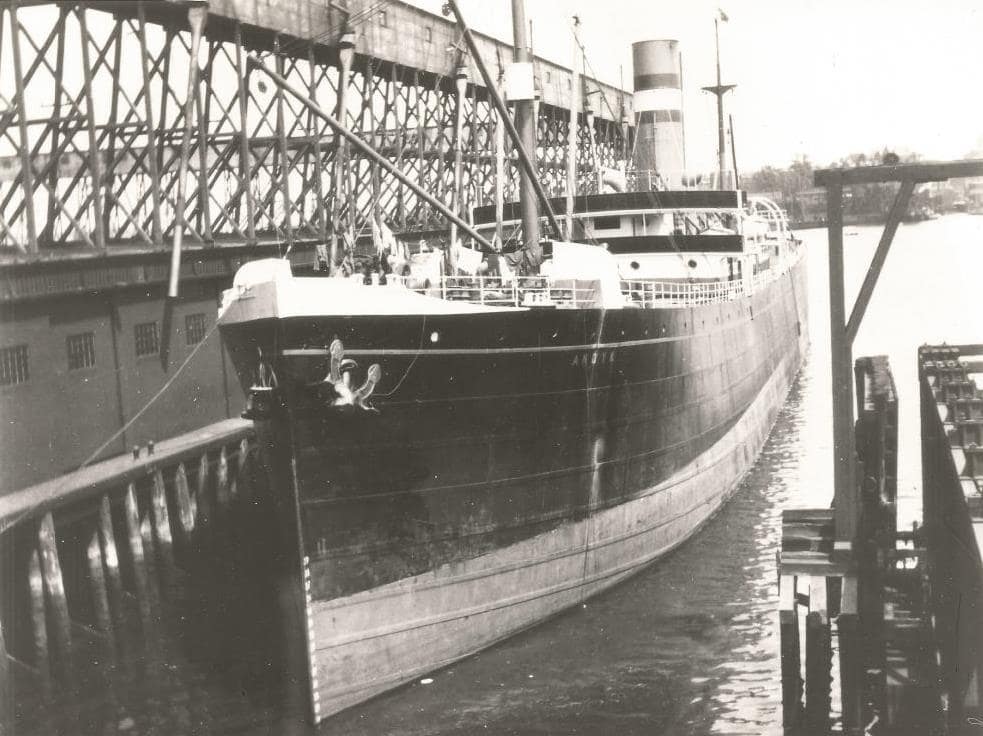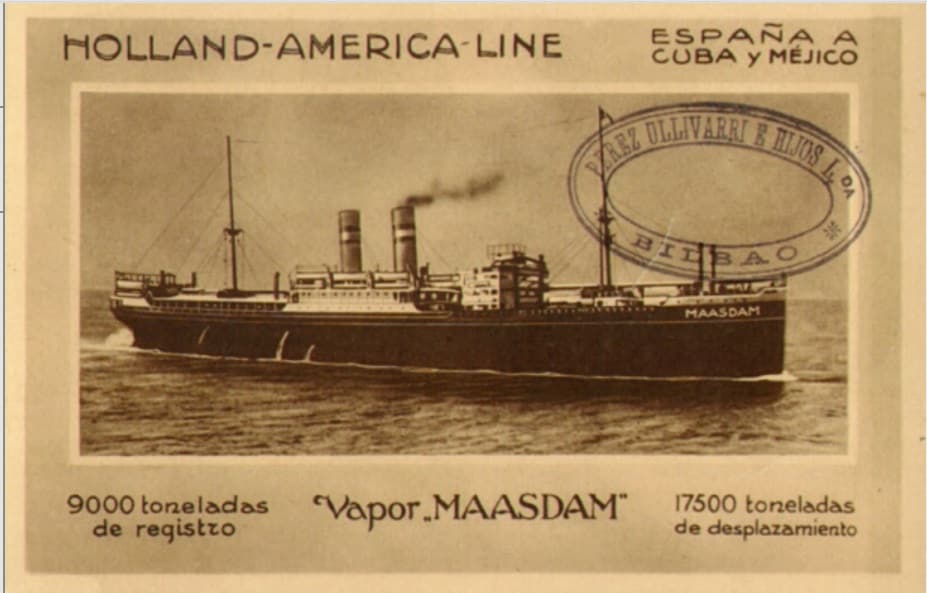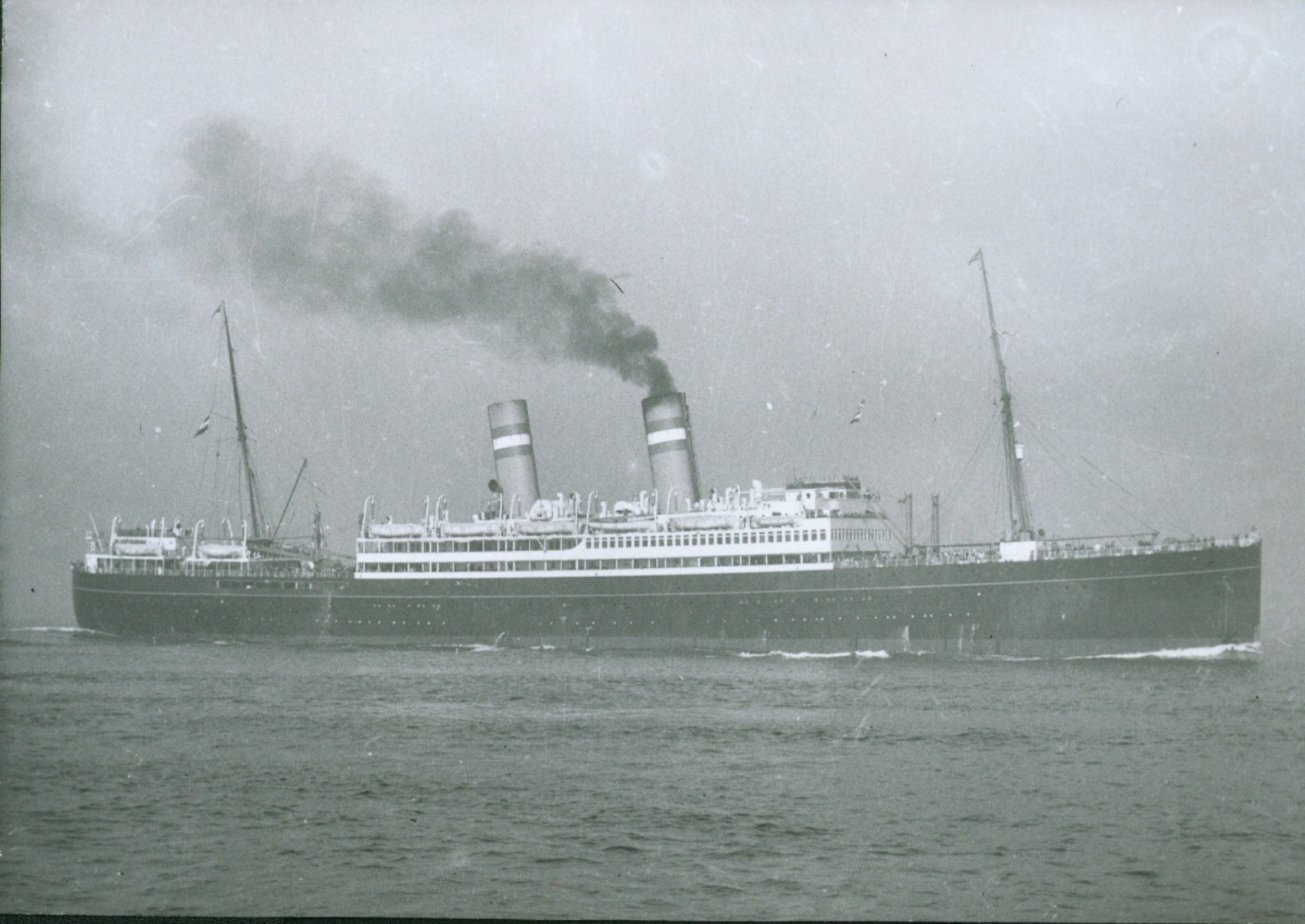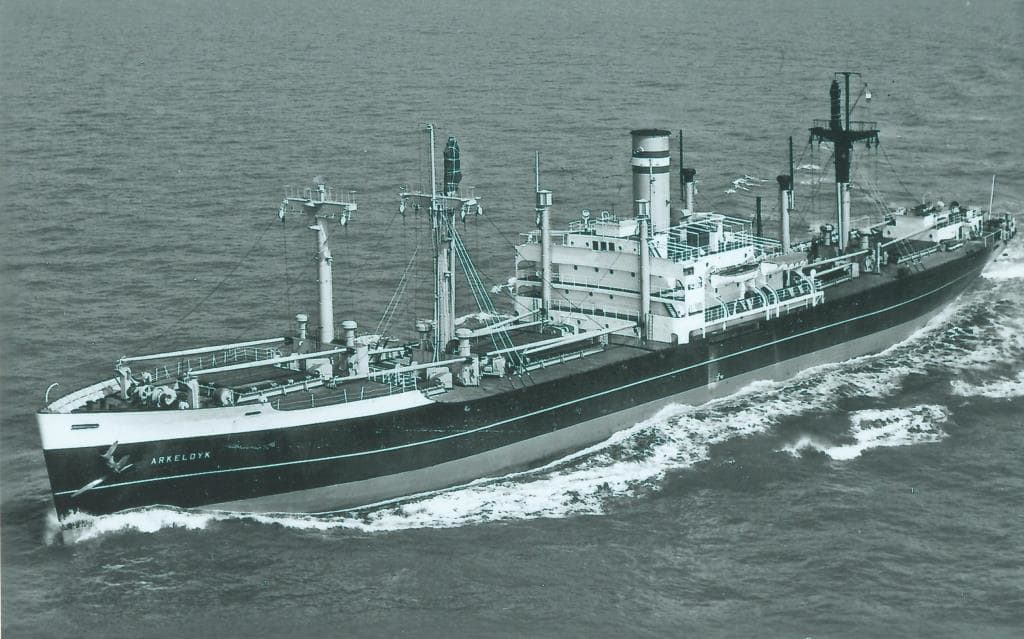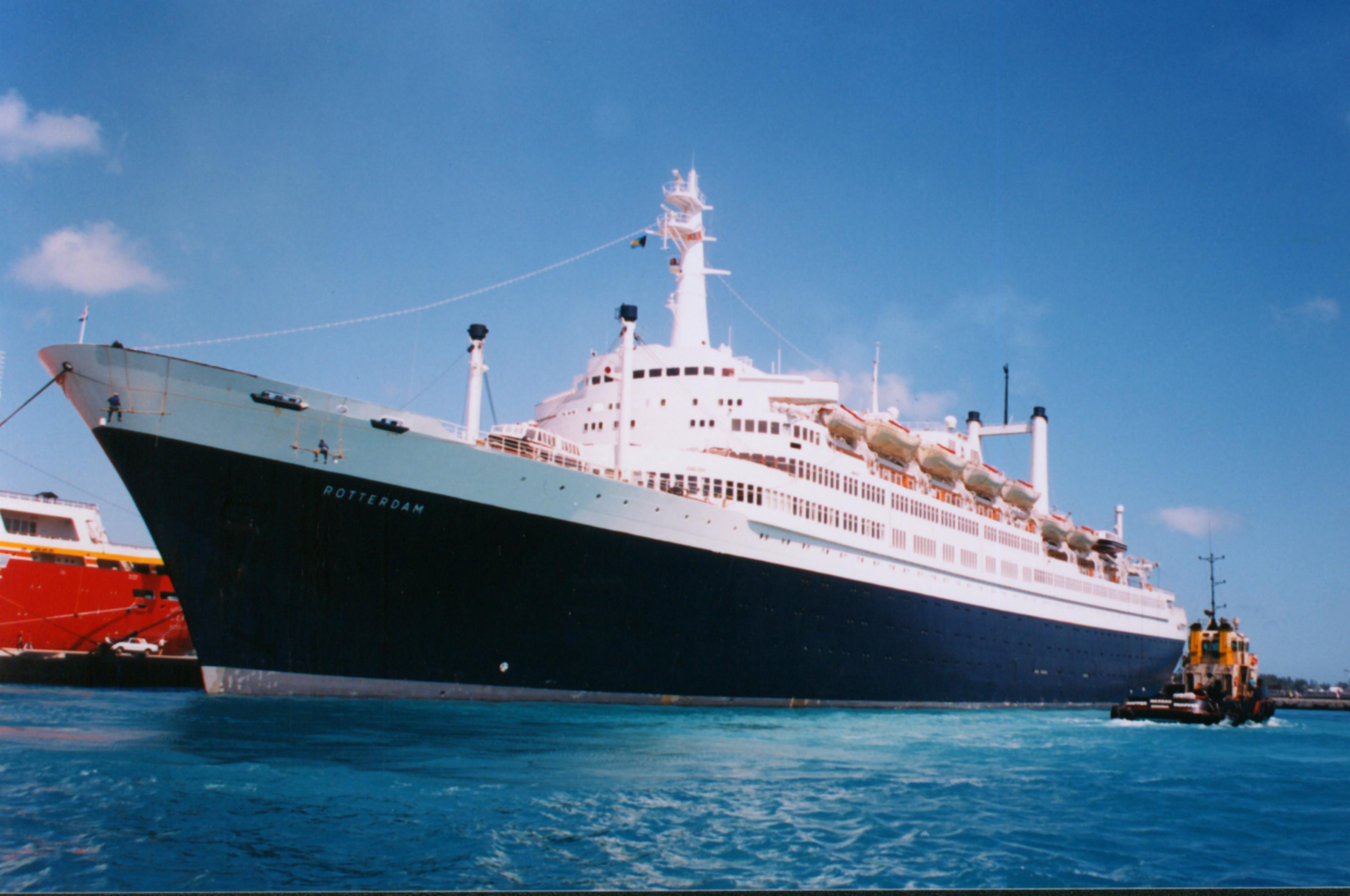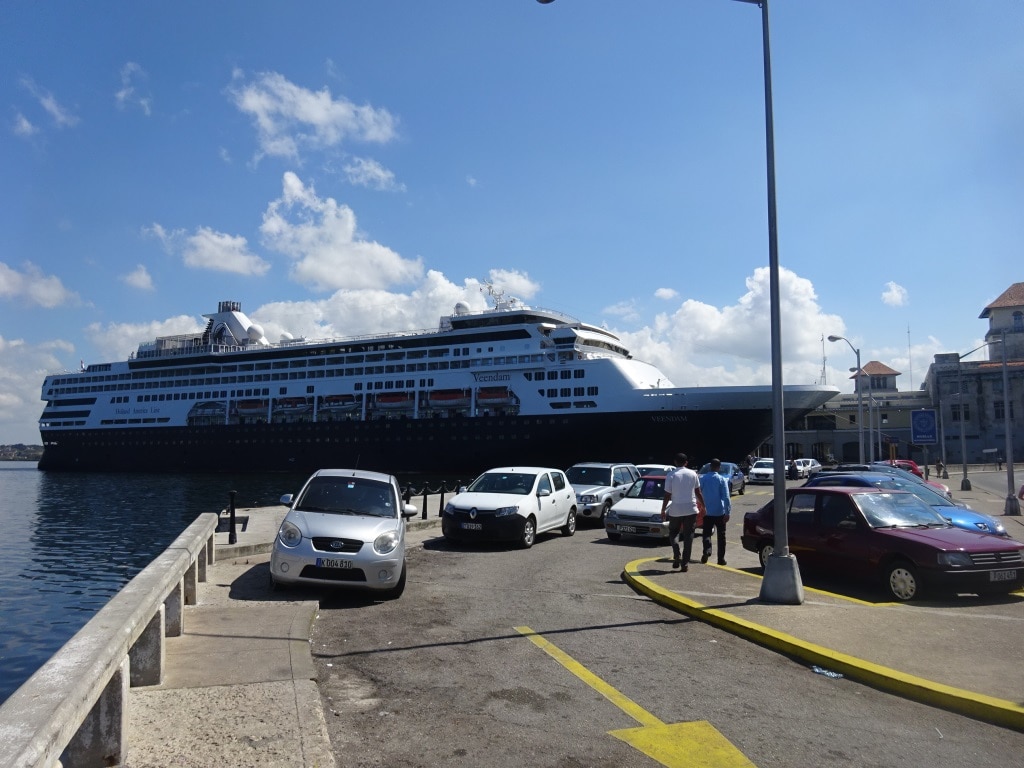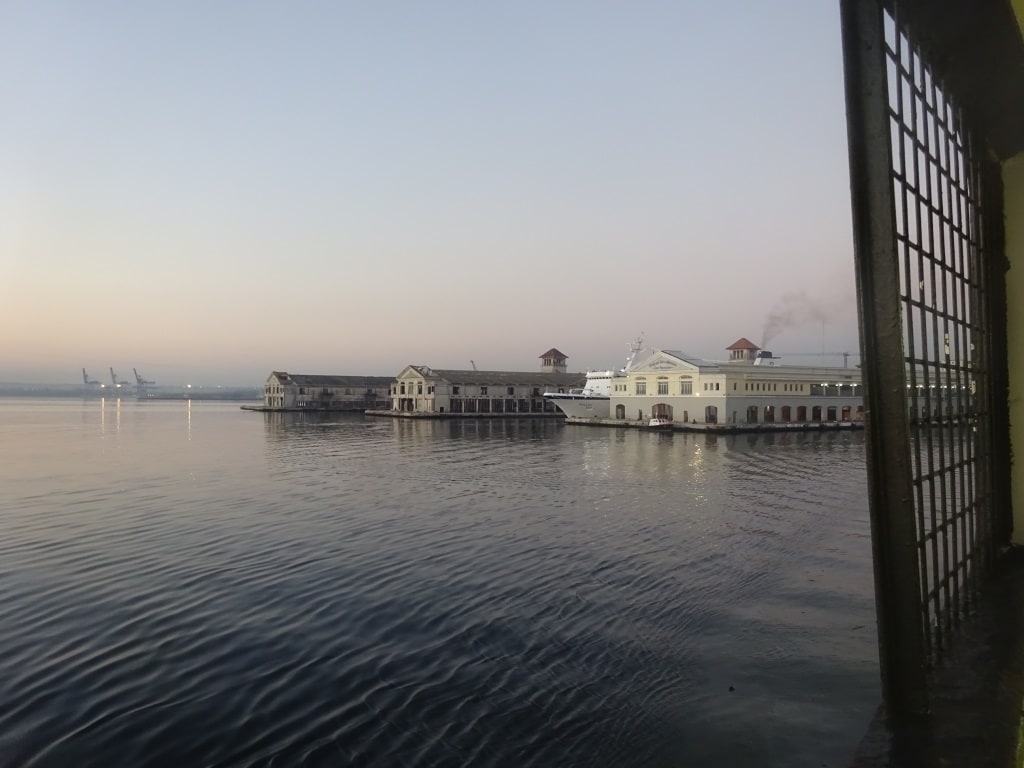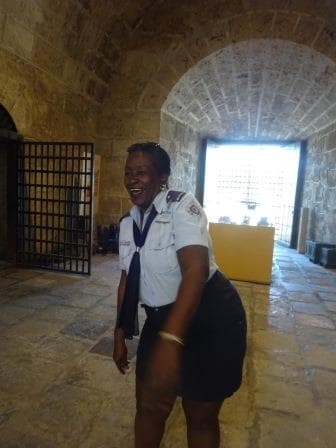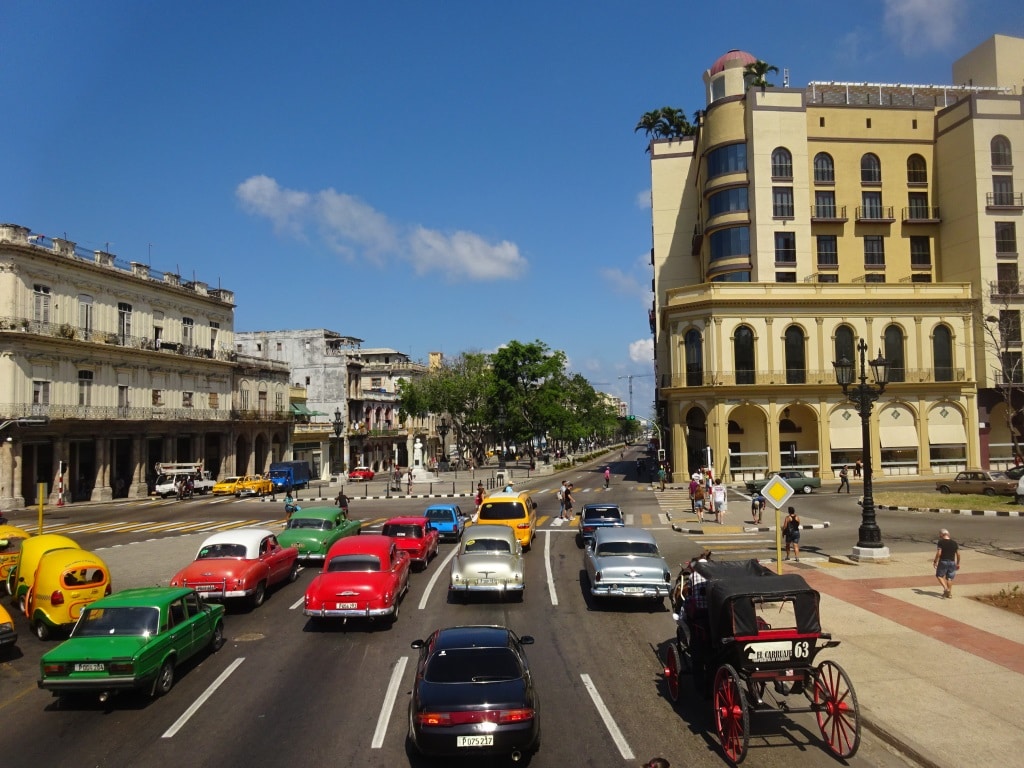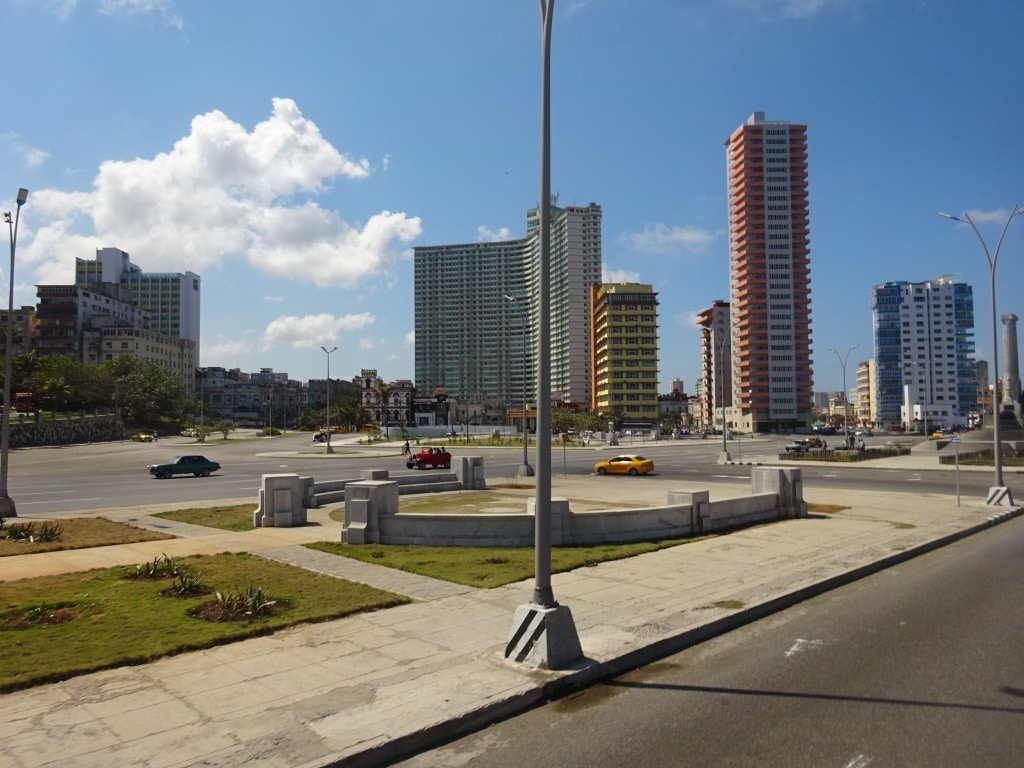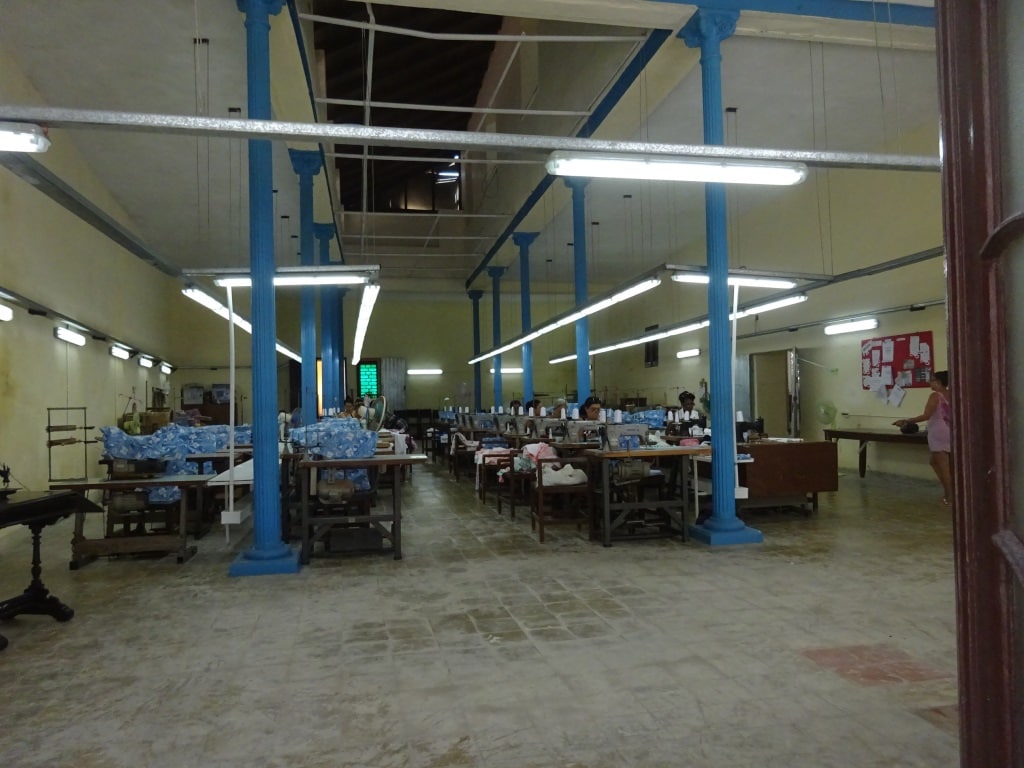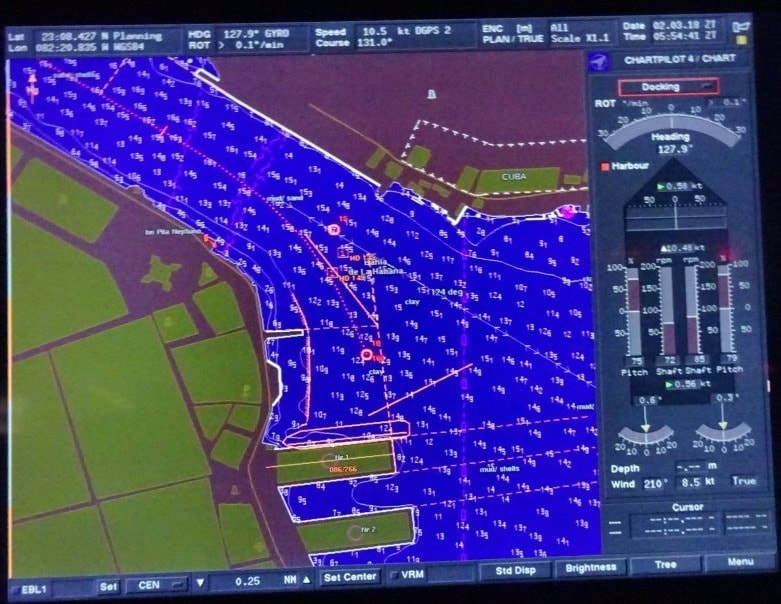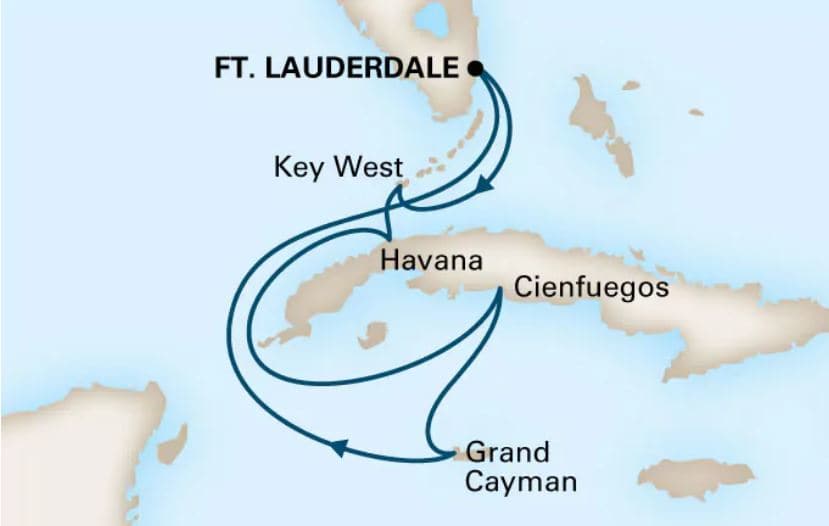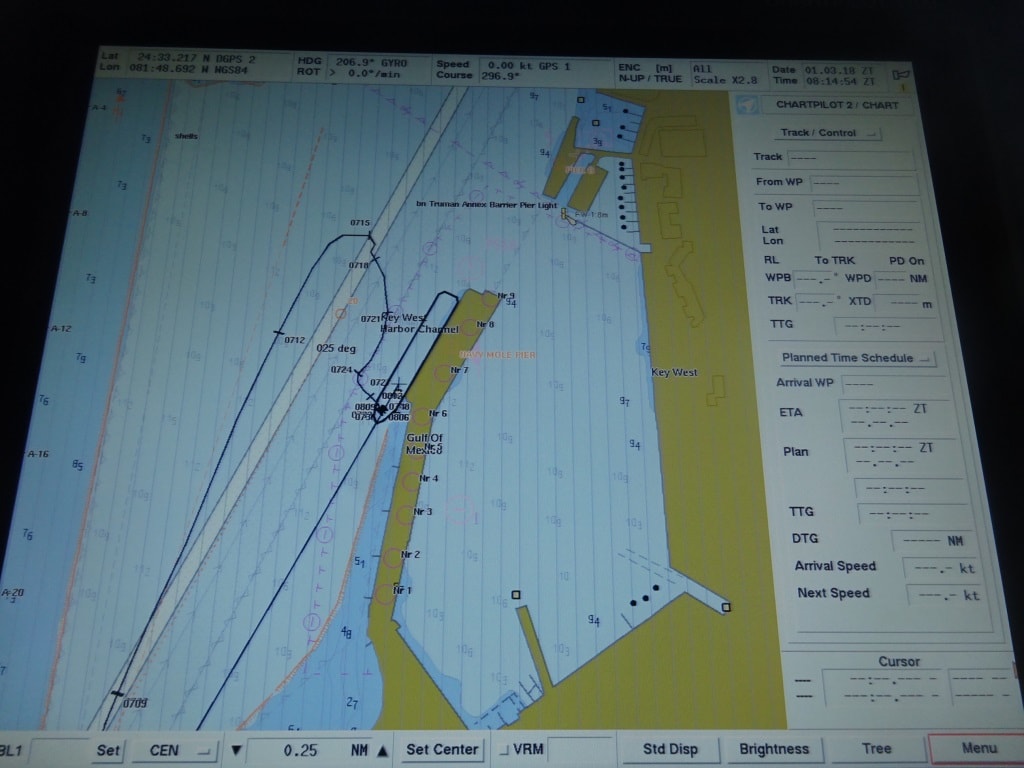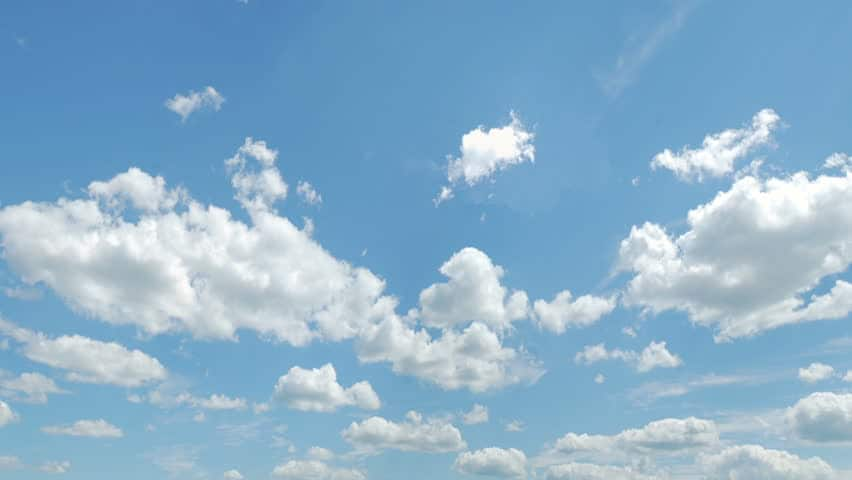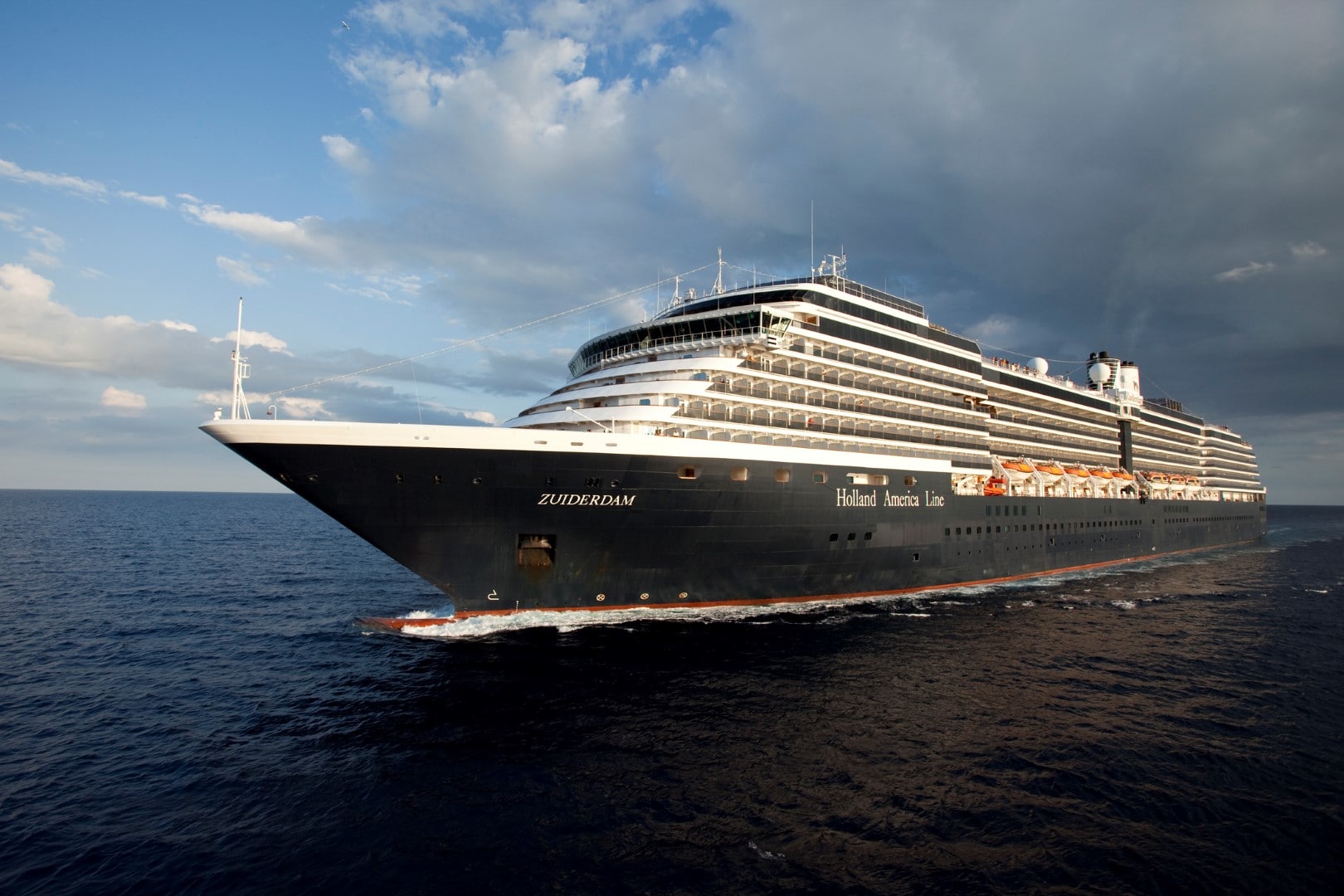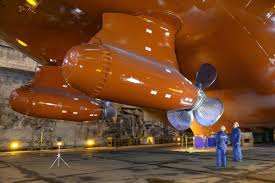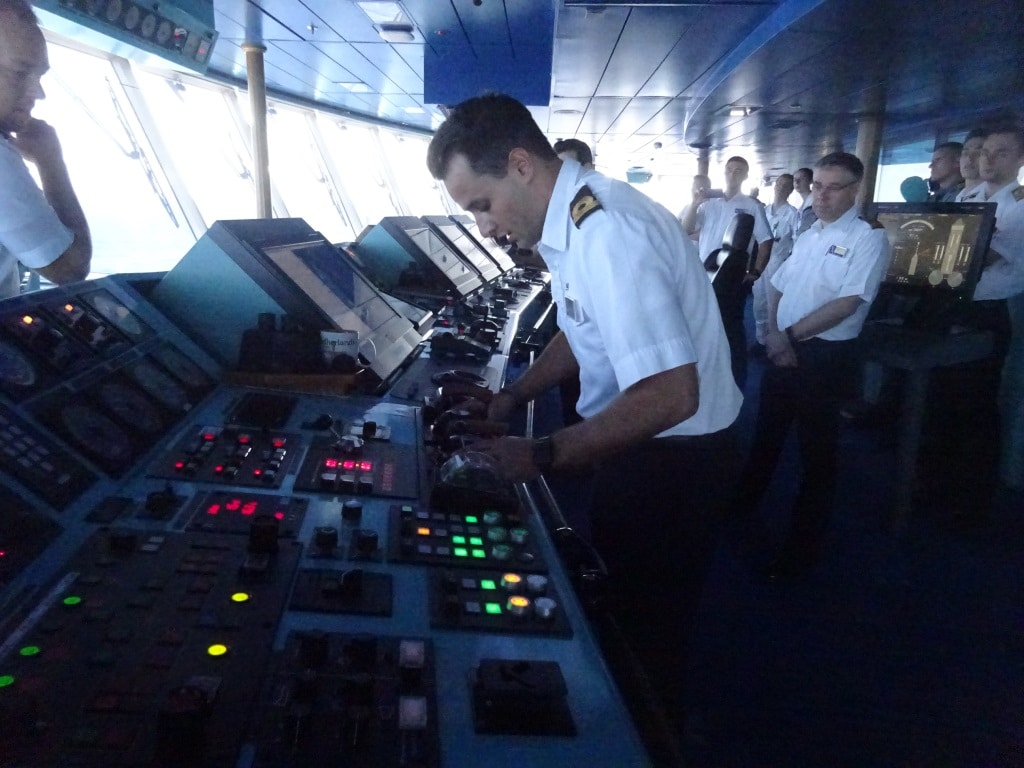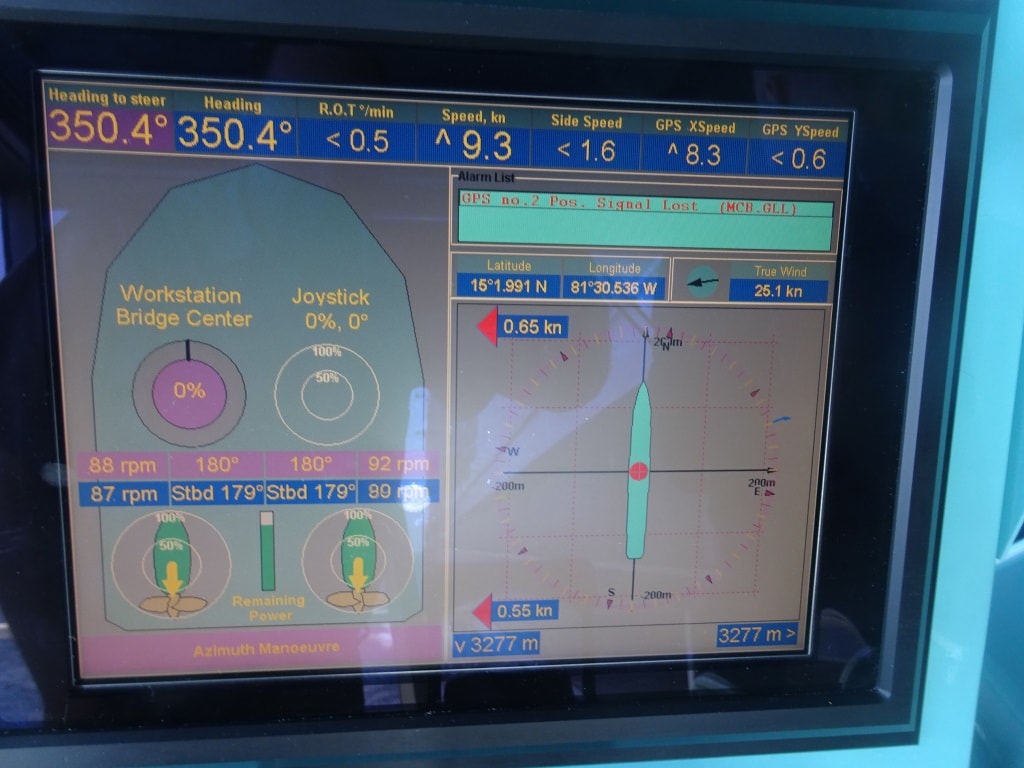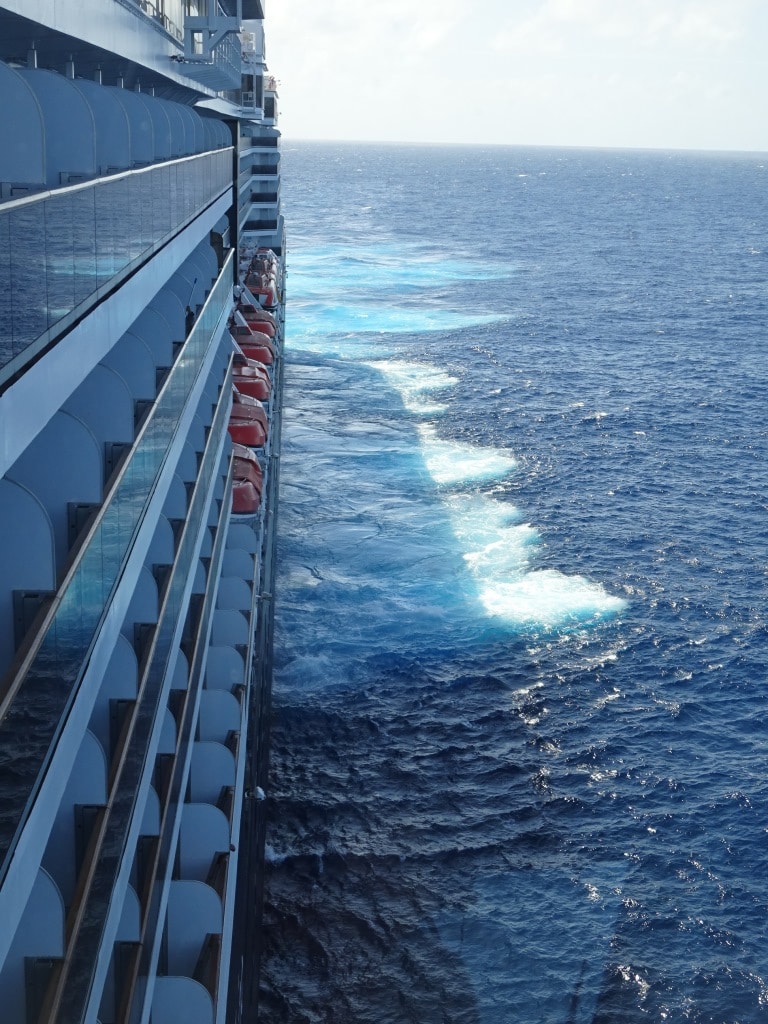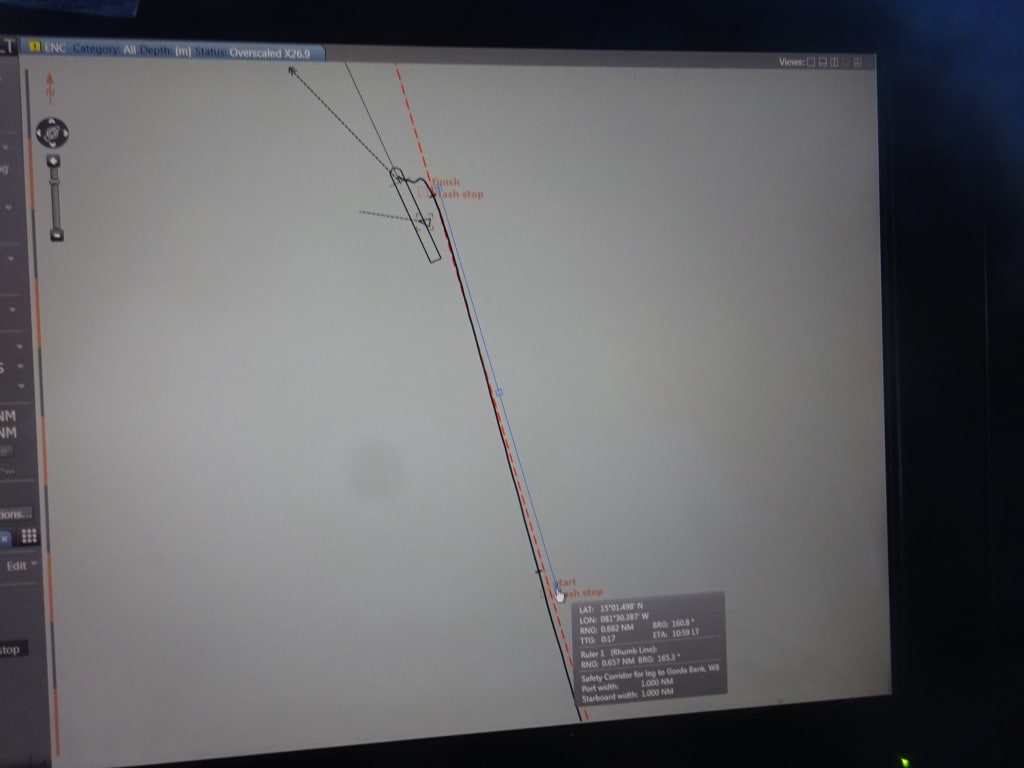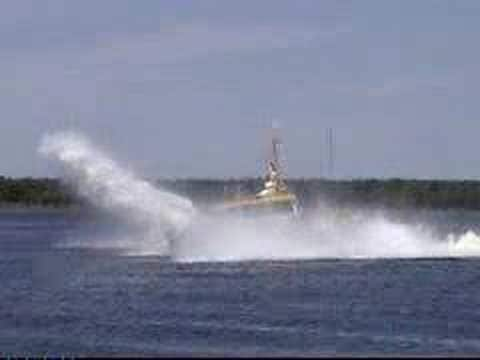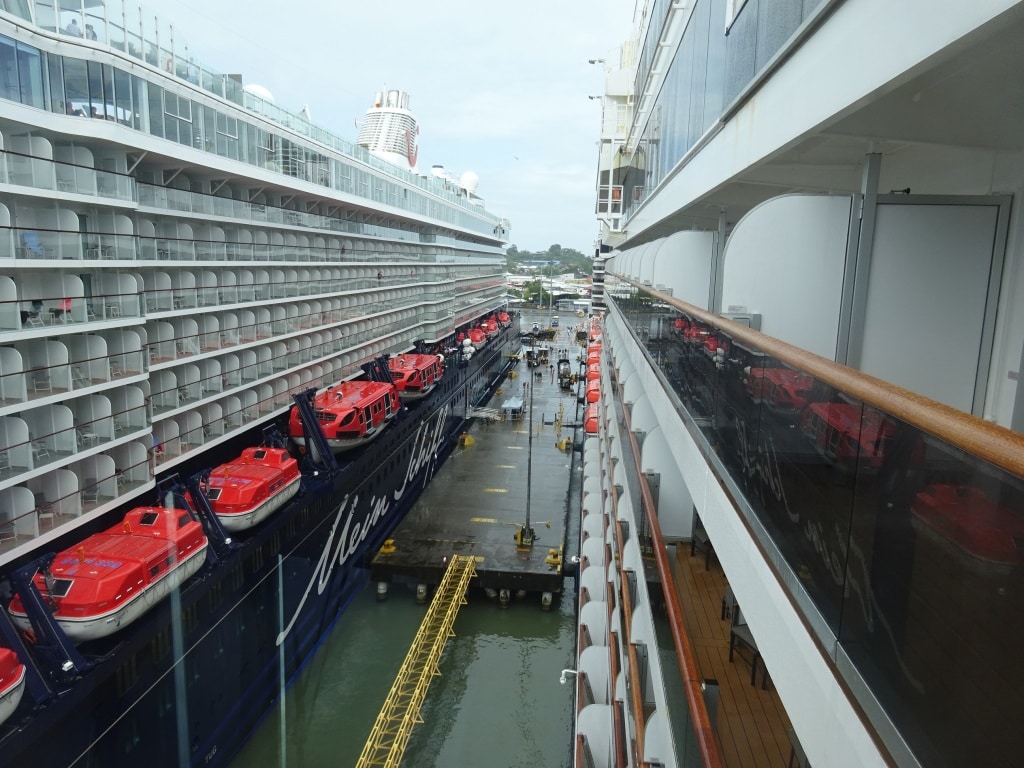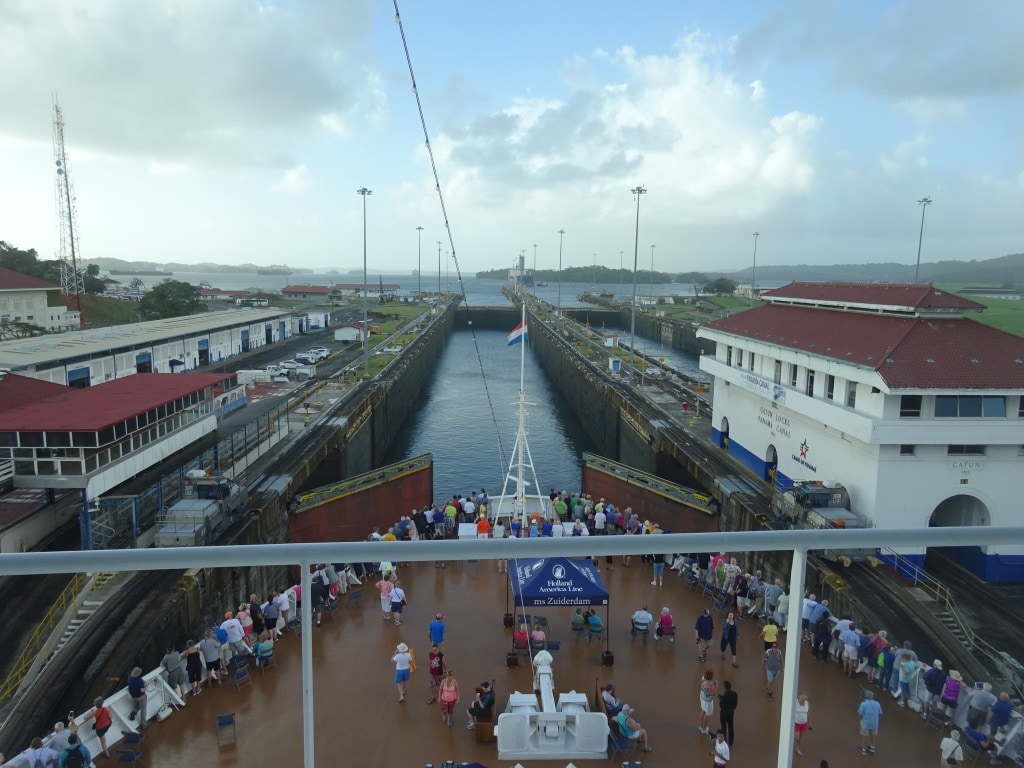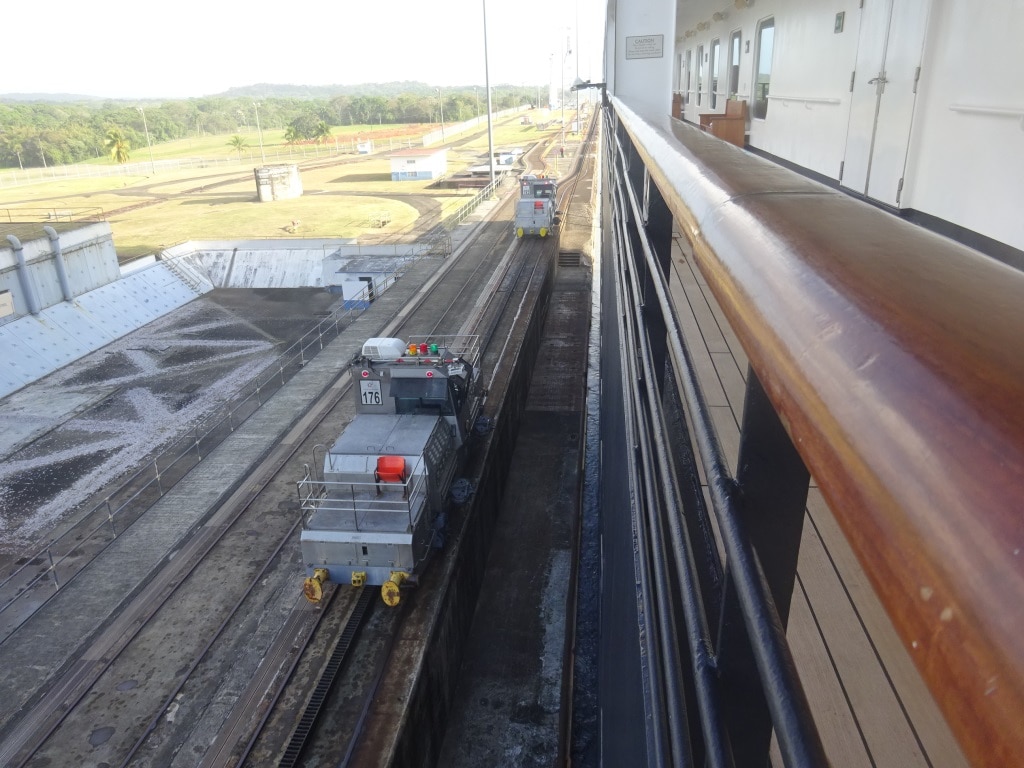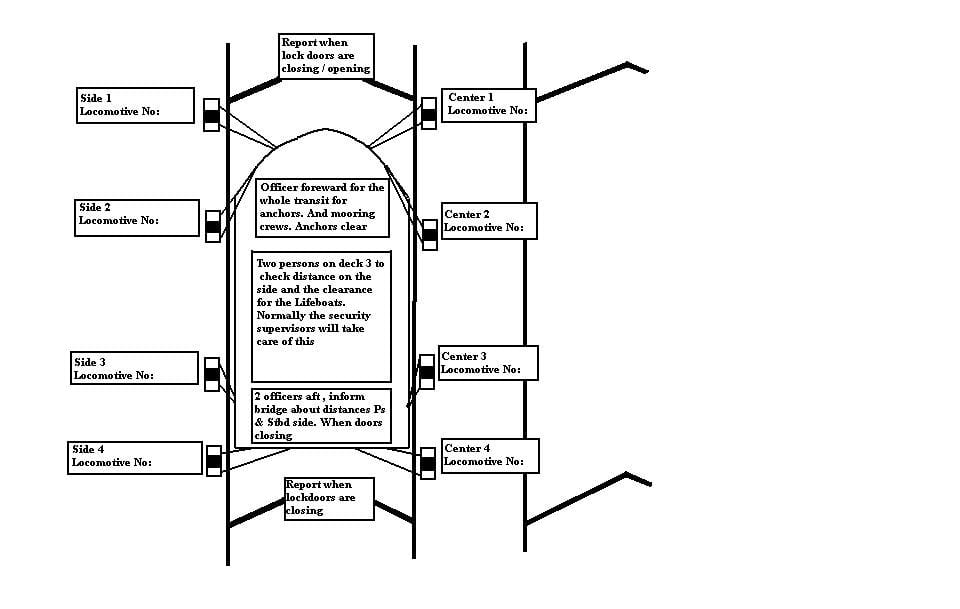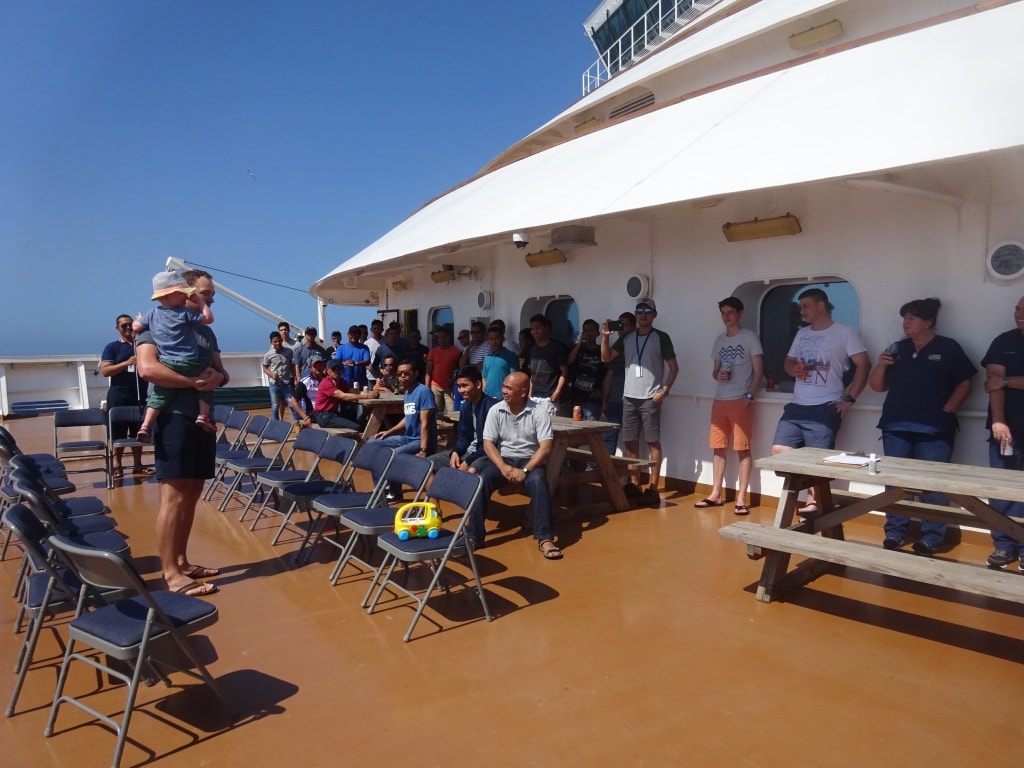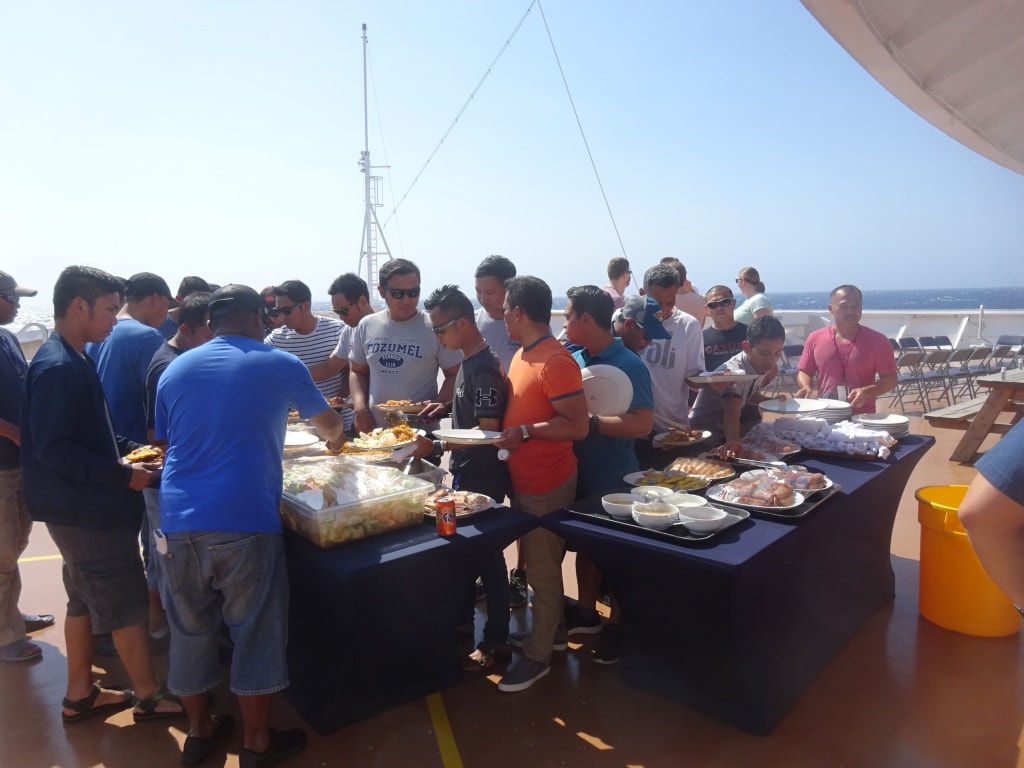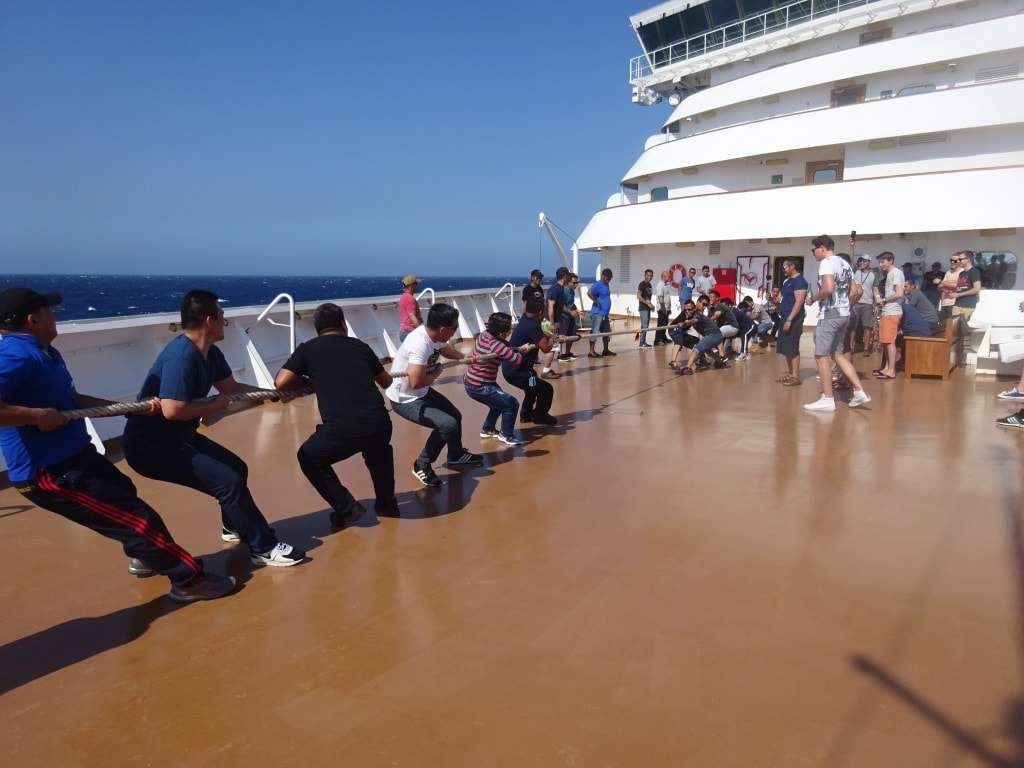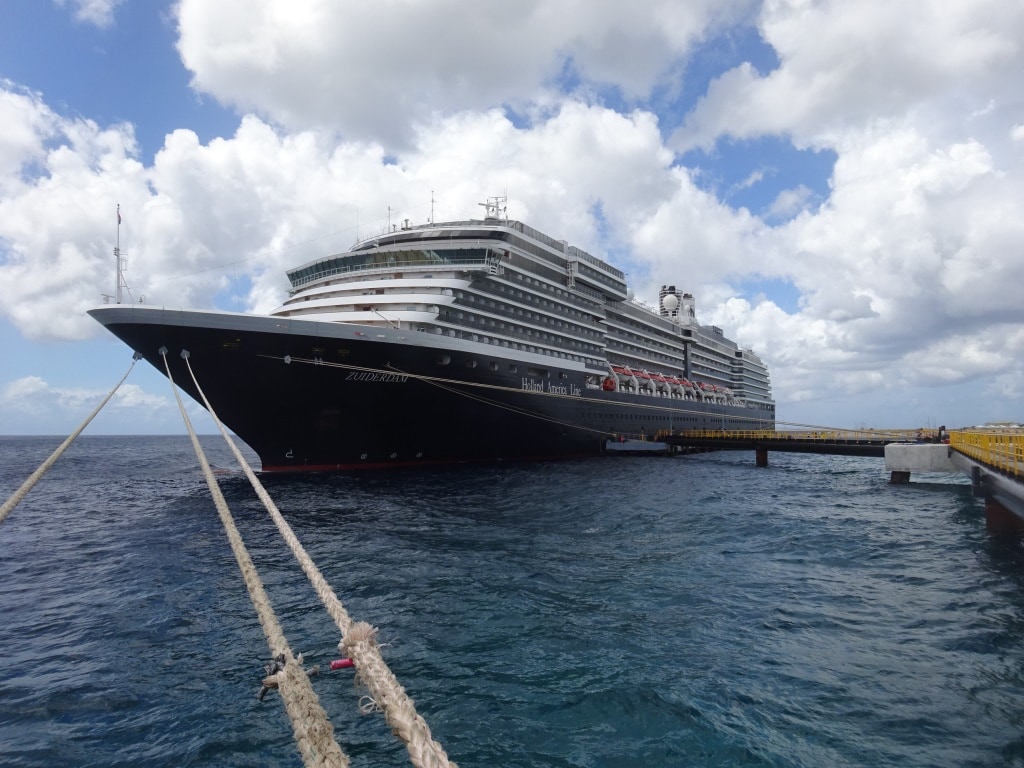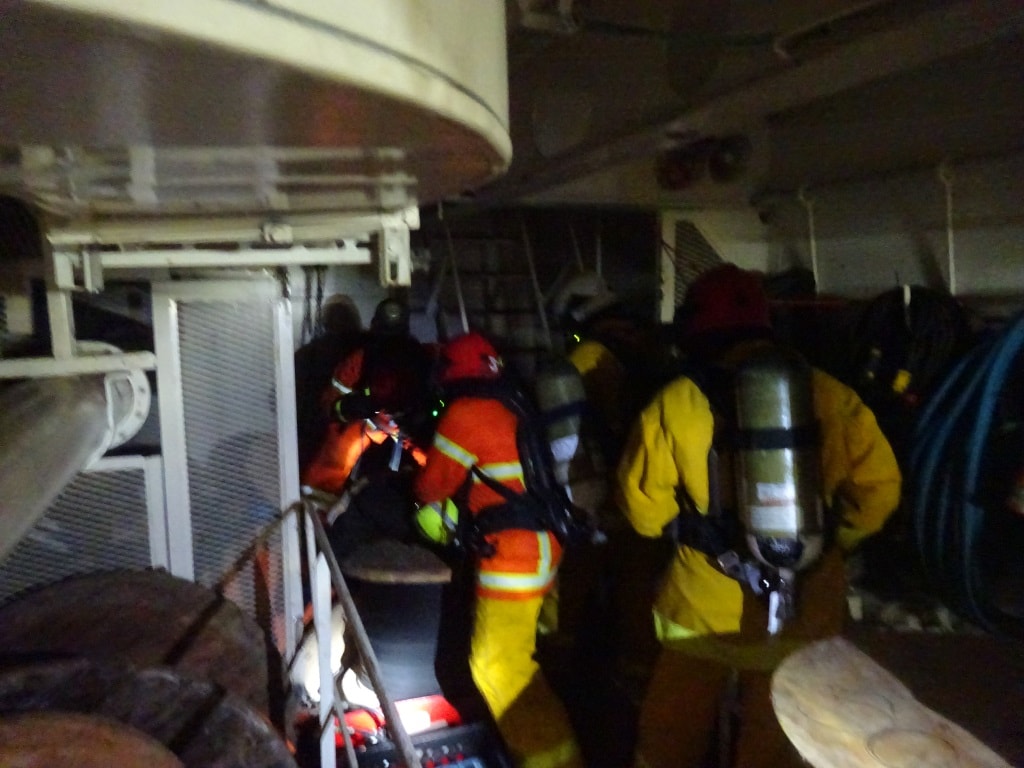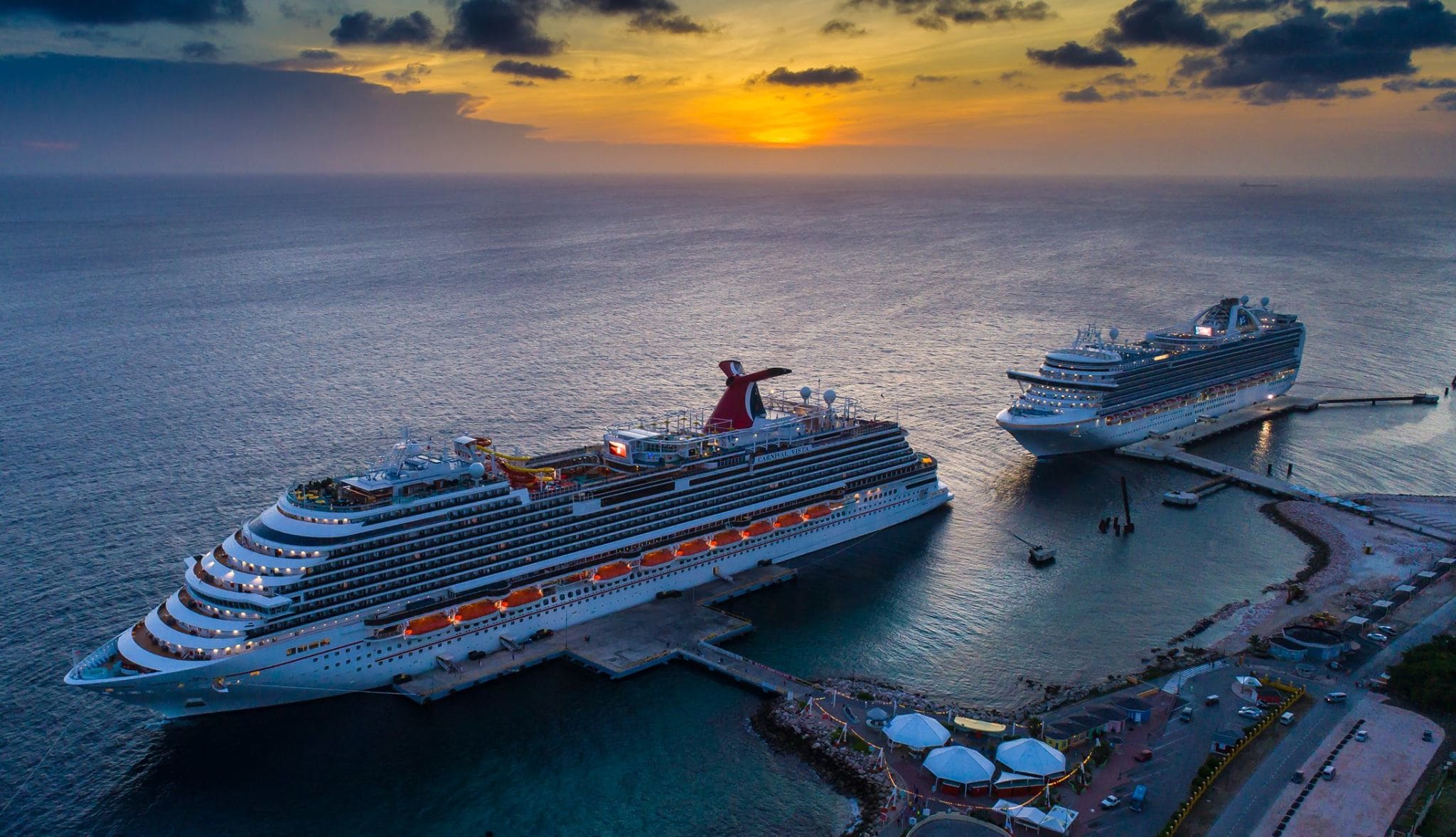While the sun was rising behind the mountains of Cuba, the Ms Veendam approached the pilot station of Cienfuegos with the plan to sail through the narrow entrance at 06.30 and then to be at anchor by 07.30 hrs. for clearance by the local authorities. All eyes on the bridge were on the anemo meter to see how much wind there was blowing. In the entrance we had to make a 90o turn in a channel that is only 300 feet wide.
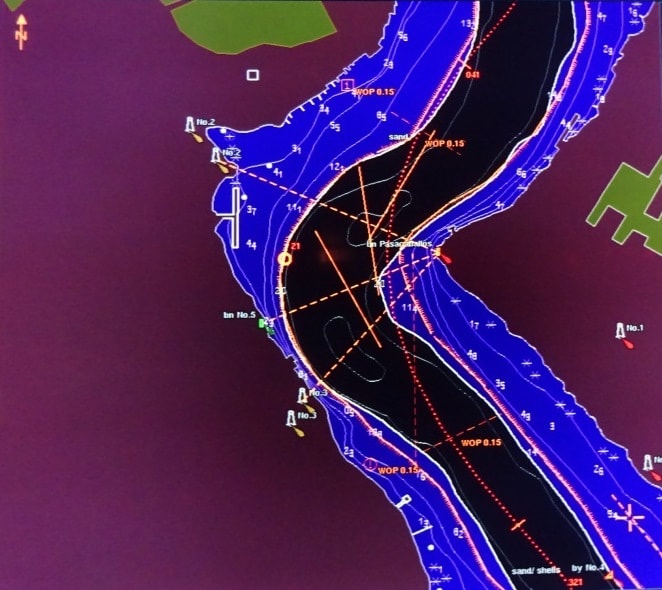
This is the challenge, the ship has to make this turn. The under water is 300 feet wide and the Veendam has a beam of over a 100 feet.
The Veendam is the largest cruise ship that has ever attempted to anchor at Cienfuegos and it relies on there being no more wind than 5 to 7 knots in the turn. So we were watching closely as the wind in open waters was around 20 knots and gusting higher. Normally there is not much wind on this side of the island but a weather system off the Carolina’s is producing a lot of wind while moving into the Atlantic and the tail is just laying over Cuba. Not nice.
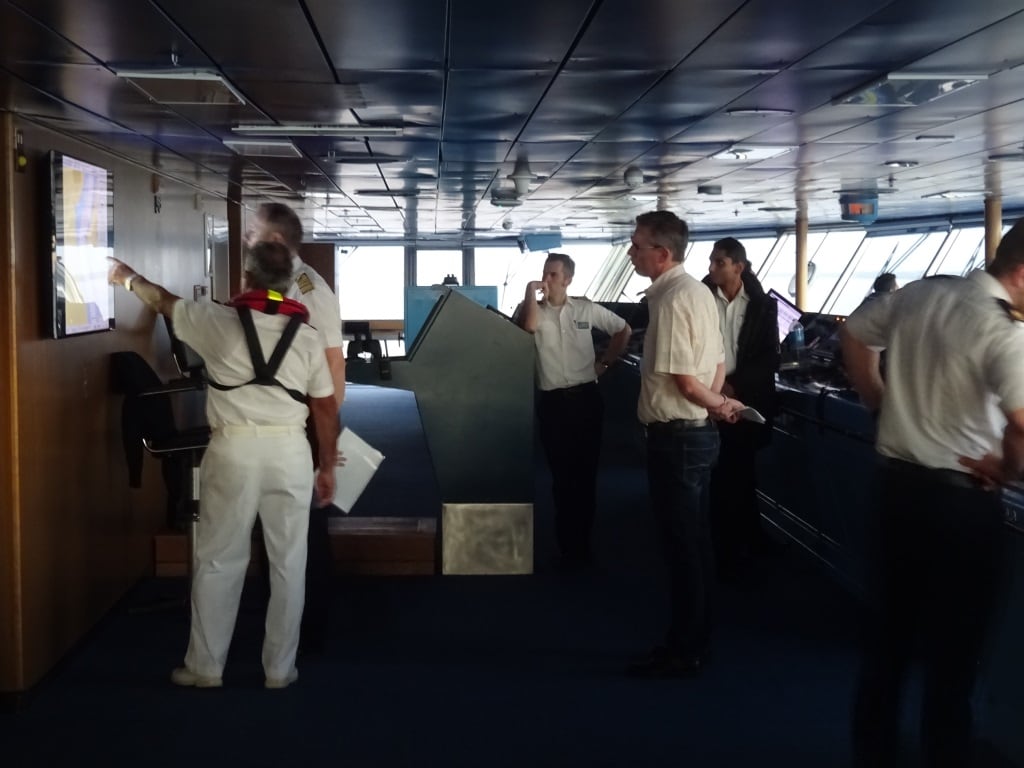
The Master – pilot conference with the Navigation Team watching. They are looking at a large television on which we can project the electronic chart.
The captain had his doubts, the bridge team had its doubts, and I had even more doubts as I do not like to go anywhere without a plan B and in this case there is no plan B. You either make the turn or you don’t. If you do not, then a new hotel will be established along the coast line here. The pilot was queried about wind and weather but according to him it was all within the limits. So the captain decided to make an approach and have a closer look. Go not too far enough into the channel so we could still turn around and close enough so that we could see the corner. In nautical language we call this an abort point. While there, the captain asked the opinions of all in the team and then decided to turn around as we could see white caps on the water, at the bend in the channel, and that meant winds higher than 16 knots which was a lot more than the 5 knots we wanted.
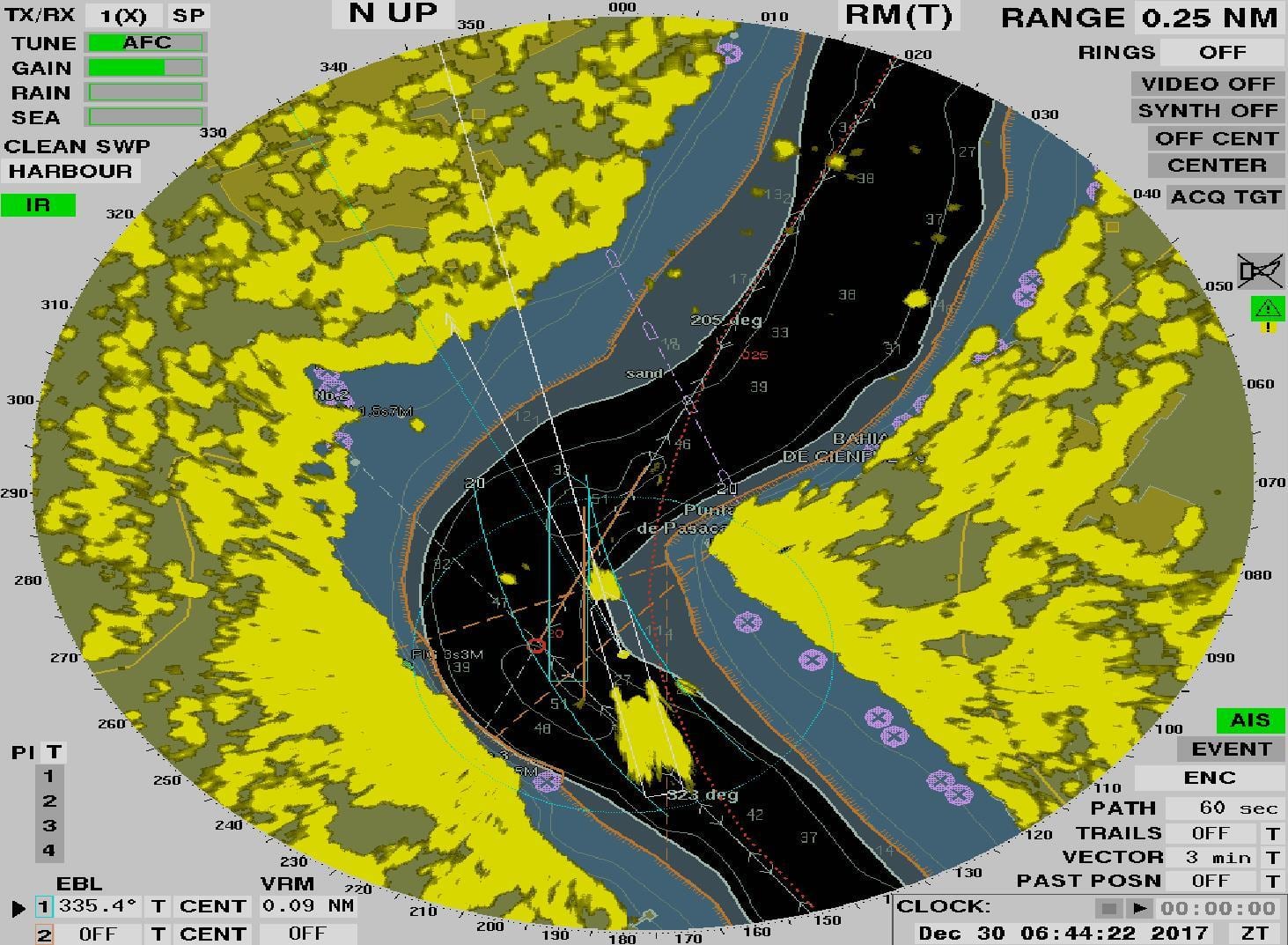
This is the challenge. When a ship goes around the corner, it always drifts a little bit even at very slow speed. If the wind then helps the drift you very quickly get outside the red line and that is bad news.
But you never know the wind might die down, so we tried it for a second time. Things got worse, more wind. Then the pilot advised that there would be even more wind in the afternoon so there was no reason to wait a few hours and see if the wind would die down, giving us the chance to make an afternoon call. So unfortunately the captain had to cancel the call and make it a sea day instead. Going somewhere else was not an option as just hopping over to another Cuban port is not something that really works under the current arrangements of Cuba Allowed Cruising. For the rest there is no other port nearby apart from Grand Cayman and we are already going there tomorrow. Lots of disappointed guests and crew, including myself as I have never been to Cienfuegos before myself. But safety comes first even if it is a chance in a lifetime to go somewhere. Hal captains do not gamble.
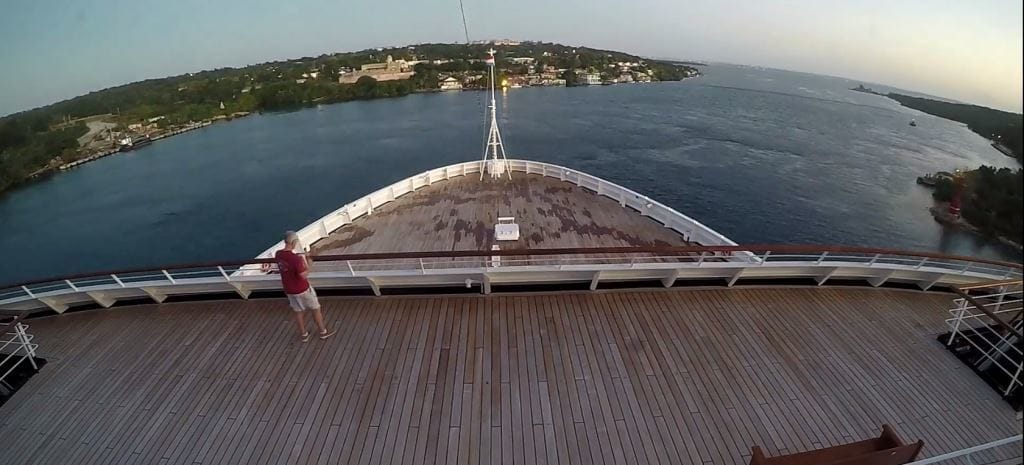
Look to the right, there are mud flats sticking out under water from the Lighthouse so this is as tight as the ship can be and as it needs to be to make the turn. Too much wind and you are set to the other side which is shallow as well.
Thus we said to goodbye to the pilot, who was not happy at all, as most likely back ashore a lot of people would be yelling at him. He might know the channel but he does not know what wind does to a very high cruise ship with balconies. So he might have gained a bit of experience today as well. The Veendam will be back to Cuba in the future again and hopefully the wind will then do what it is supposed to do here; stay away.
With a sea day, the Cruise Director had to fill an empty daily program and I was roped in as a space filler to keep at least some of our guests happily diverted for a few hours. The Captain decided to join me so he could explain what happened as guests normally equate cancelling ports with bad weather, not with a nice and sunny day. So a little explanation about what was lurking under water helped to raise the mood and was also greatly appreciated. I think it must be the first time in HAL history that two captains were giving a joint presentation on the stage. He used slides from his last call, when he did get in, to explain what the challenge was and these are the pictures you see in this blog today.
For the remainder of the day and night, the Veendam will sail very slow towards Georgetown Grand Cayman where we will arrive around 06.30. For anchoring in Grand Cayman a bit of wind is good; we are at anchorage number 4 which is the nearest one to the port and, if available, we will get help from a few shore side tenders to speed our operation. All good things after not such a good day. But it is going to be a busy day tomorrow, with the Brilliance of the Seas, the Norwegian Escape, the Carnival Miracle and the Veendam nicely lined up outside the port. They will put 12,014 guests ashore if everybody is going, not counting crew. It is going to lively in Front street. But we are still lucky, on March 20th. The Nieuw Amsterdam is in port together with a few biggies and they will put ashore just over 20,000 guests. I will stay on board and use my time to teach the shop staff how to deal with guests who do not want to go to the Guest Boat drill. That is much more fun.
